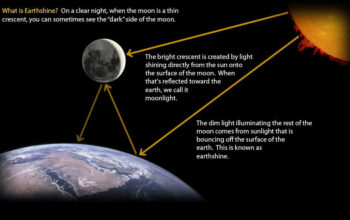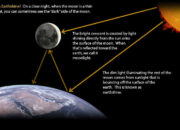The enigmatic nature of black holes has captivated the minds of scientists and philosophers for decades. These cosmic entities not only challenge our understanding of space and time but also provide a fertile ground for exploring complex theories such as string theory and the braneworld paradigm. Recent developments in theoretical physics suggest an intriguing interplay between black holes and the fate of extra dimensions posited in braneworld scenarios. The proposition that black holes can ‘shrink’ the very fabric of the braneworld raises critical questions about the dimensionality of our universe and invites scientific inquiry into the implications of such a phenomenon.
The concept of the braneworld arises from string theory, which posits that our universe may be a three-dimensional ‘brane’ embedded in a higher-dimensional space. According to these models, the standard model of particle physics is confined to the brane, while gravitational forces can propagate into the additional dimensions beyond our perception. The intriguing characteristic of black holes, specifically their event horizons, could interact with these extra dimensions in unforeseen ways. When a black hole forms, it warps spacetime dramatically, and this distortion might extend to the additional dimensions present within braneworld frameworks.
Upon the formation of a black hole, the immense gravitational pull exerts a localized curvature on the surrounding spacetime. This warping could potentially propagate through the brane, influencing the behavior of physical laws as observed from within it. The crux of the current investigation stems from the hypothesis that under certain conditions, black holes could induce a contraction or ‘shrinkage’ effect on the extra dimensions, leading to their dimensional collapse. Such phenomena can not only reshape theoretical paradigms but also provide an avenue for understanding the interplay between gravity and quantum mechanics.
In a braneworld scenario, the existence of these extra dimensions forms the backbone of the physics governing high-energy phenomena. An interaction between a black hole and these dimensions can lead to a scenario where the usual laws of physics break down. When a black hole reaches a critical mass, theoretical models suggest it may create a bridge or ‘portal’ to alternate dimensions, rendering them vulnerable to collapse. So, what would happen to our universe should these additional dimensions shrink significantly? The implications are profound and potentially catastrophic.
The collapse of dimensions due to the presence of a black hole raises pivotal questions. The first is the nature of gravity itself. Traditionally, gravity is understood as a force that operates within four dimensions—three spatial and one temporal. However, if extra dimensions could be contracted or eliminated, our understanding of gravitational dynamics would require substantial revision. General relativity, which remains the prevailing theory describing gravitation, may not hold under the new regime dictated by black hole dynamics and the resultant effects on the brane.
Moreover, the contraction of dimensions could herald a restructuring of the underlying fabric of spacetime. The implications extend beyond black holes, manifesting a possible connection between cosmological events and theoretical constructs like string theory and M-theory. As dimensions collapse, new forms of energy might emerge, necessitating the reevaluation of energy conservation principles as established in classical physics. This proposition compels the scientific community to reconcile its theories with observable phenomena, presenting a unique nexus of theoretical research and empirical validation.
Indeed, the ramifications of black holes shrinking extra dimensions open new vistas for exploration. For instance, if black holes can initiate a reduction in dimensionality, one must consider the stability and longevity of such phenomena. Black holes are often regarded as ultimate sinks of matter and energy; what happens if they consume dimensions themselves? This conundrum invokes notions of stability and entropy. The relationship between entropy and black holes, initially articulated by physicists like Jacob Bekenstein and Stephen Hawking, intertwines with the fate of the brane. A collapse of dimensions could signify a profound increase in entropy, manifesting as a chaotic spiral toward a new equilibrium.
Furthermore, the iterative collaboration between black holes and braneworld theory provides fertile ground for developing novel observational strategies. If black holes are indeed capable of altering spatial dimensions, uncovering such phenomena could yield insights into their structure and formation. Gravitational wave astronomy, combined with advancements in high-energy particle physics, may soon offer empirical evidence supporting or refuting these radical theories. Observations of merging black holes or the complex dynamics surrounding them may reveal anomalies consistent with the predictions derived from braneworld scenarios.
Ultimately, the intersection of black holes and braneworld theory invigorates our understanding of the universe. These cosmic behemoths may serve as conduits, revealing the inherent architecture of reality through their interactions with dimensions beyond our sensory reach. As researchers grapple with these profound implications, humanity’s quest for knowledge faces an exhilarating horizon. One can only speculate about the truths waiting to be uncovered in the tapestry of the cosmos, where black holes may not only consume matter but also hold the keys to understanding the very dimensions of existence itself.
This burgeoning discourse invites physicists, cosmologists, and mathematicians to recalibrate their perspectives and explore uncharted avenues of inquiry that challenge established norms. The potential for a dimensional collapse invites curiosity and ingenuity—a testament to the ever-evolving nature of scientific understanding.








